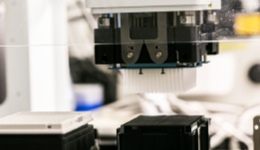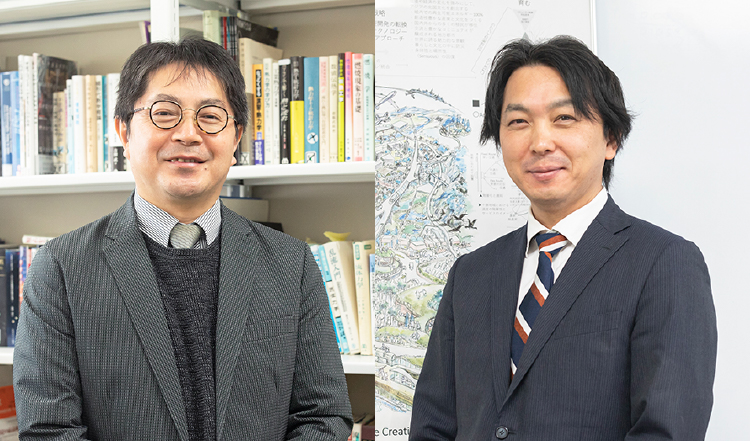Research Interview Special
"Food, Agriculture, and AI"
× "Muroran Institute of Technology"
Hokkaido's importance to Japan's food production goes without saying, as it ranks first in the nation in terms of calorie-based food self-sufficiency and fourth in terms of production value-based food self-sufficiency.
Muroran Institute of Technology is also working with companies to develop robotic cultivation technology, automatic control technology for greenhouse cultivation using AI (artificial intelligence),
We also conduct research into enhancing the functionality of food.
Here, we interviewed two professors conducting research related to food and agriculture in a dialogue format.
MEMBER
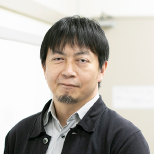

Please tell us about the research you are each working on and your thinking behind it.
Supporting Hokkaido's food and agriculture
Associate Professor Watanabe: I specialize in algorithms related to optimization and data mining. In particular, I am researching the development of solutions to problems that consider multiple criteria, known as "multi-objective optimization," and methods for mining the results.
We also analyze and propose solutions tailored to the needs of companies, such as optimizing low-cost, high-quality production environment models. From the perspective of food and agriculture, we are involved in creating models for greenhouse cultivation of vegetables. One company with which Muro Institute of Technology has a comprehensive collaboration agreement cultivates tomatoes as part of its business in a greenhouse the size of two to three gymnasiums.
Tomatoes shipped to supermarkets and other stores will be lost if they are more or less than the number of tomatoes contracted several weeks before, so accurate yield prediction is required. There is also the problem of how to accurately observe the conditions within the vast farm and cultivate appropriately according to those conditions. In this joint research, we are working on such yield predictions, condition estimation, and cultivation management using AI and IoT technologies.
Professor Tokura: My main research theme is protein aggregation, which can cause various diseases. For example, Alzheimer's disease is caused by the accumulation of proteins called "amyloid beta" and "tau" in the brain, which leads to neuronal death. I am using my own bio-nano imaging technology and AI to analyze how these proteins accumulate and cause neuronal death, and how we can prevent this.
Furthermore, we are working with companies to analyze foods that cause lifestyle-related diseases and, conversely, to develop foods with functionality that suppresses certain diseases. Professor Watanabe is working on a tomato production model, and I am working on improving the functionality of tomatoes to increase their added value. Although we are each involved in different projects, we hold regular meetings and work together on our research.
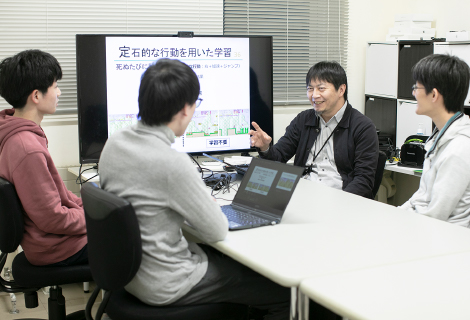
Associate Professor Watanabe: Hokkaido is currently known as the kingdom of agriculture, but the average age of producers is in their 60s, and the population is aging. Looking ahead 10 to 20 years, I believe it is urgent to create an environment where a small number of people can harvest crops steadily.
In that sense, we believe that research into greenhouse cultivation, which provides a more stable growing environment than open-field cultivation, is an important project that will support Hokkaido's agriculture in the future.
In the past and even today, vegetable harvesting has relied on the eyes, intuition, and experience of the grower in charge of cultivation. Therefore, we aim to build a production model that can produce high-yield, high-quality crops even with a small number of people by analyzing their know-how with AI and having it learn and optimize temperature, humidity, sunlight, and fertilizer adjustments.
Professor Tokura: I think that maintaining health by consuming processed foods made from highly functional crops is an area that will attract more and more interest in society in the future. Of course, good yields and quality are important, but I also think that adding value to products that "improve functionality to improve health" is important in increasing the value of Hokkaido's agriculture.
Professional growers control the growth of tomatoes by adjusting the amount of fertilizer needed depending on their condition. That is Professor Watanabe's field of research, but I am interested in what functional substances tomatoes produce when stress is placed on them in the cultivation environment. Although functionality can have a wide range of effects, I believe that by using AI to analyze this, the speed at which companies can develop crops with the functionality they are looking for will accelerate even further.
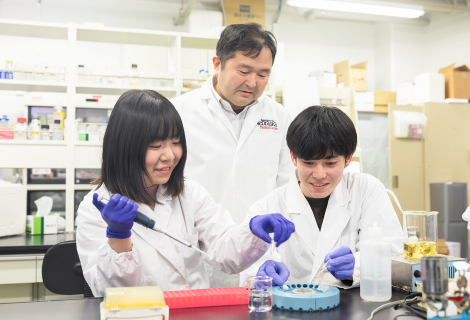
Please tell us about your future plans.
Accelerated by AI
Associate Professor Watanabe: In my field of research, advances in equipment and IoT technology have made it possible to measure and analyze quickly and at low cost, even when using AI, which previously required time and cost.
Currently in the field of AI technology, "deep learning," in which machines automatically learn and derive answers, is attracting attention, but there are still challenges to its use, such as the inability to explain why a given answer was derived.
In the future, it will be important to develop machine learning models known as "X (Explainable) AI," which can explain to humans the process that leads to prediction or inference results, and I would like to work toward developing this.
Professor Tokura: As Professor Watanabe said, advances in technology such as AI have made it possible to visualize things that were previously difficult to quantify, making it easier to identify the causes of illness.
In the case of Alzheimer's disease research, joint research with companies has revealed that mint plants, which are used as spices, have the effect of suppressing the aggregation of "amyloid beta." Furthermore, we are expanding the scope of application to Parkinson's disease, rheumatism, diabetes, and other diseases in which protein aggregation is said to be involved in the onset of the disease, just like Alzheimer's disease.
In the future, I would like to further develop visualization technology and strive to identify the causes of diseases, as well as discover effective foods that can be grown in Hokkaido and conduct research to improve their functionality.
Tell us what you want.


